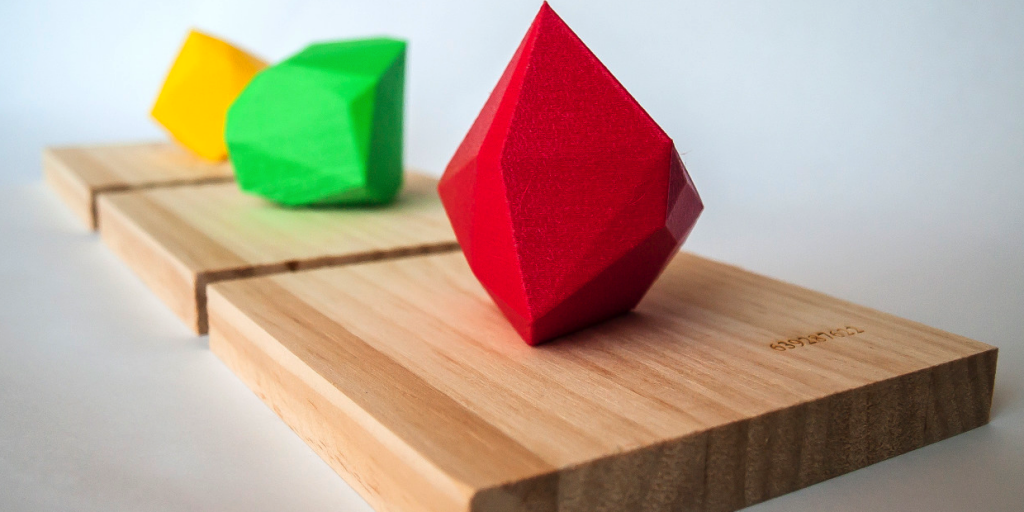
Boy, have times changed. There are dozens upon dozens of various dating website and apps, which have literally taken the dating scene by storm. There are dating sites for certain races, religions, political affiliation and even for individuals who have certain sexually transmitted diseases. You name it, there is probably either a dating website or app available for it.
Probably one of the more popular dating applications, at least when I talk to my friends and peers, is an app called Tinder. With a promotional line that reads, “Any swipe can change your life,” the app makes the dating process as simple as swiping right or left on your mobile device.
One man, named Nahuel Coppero, decided to create something called “Tinder Gems,” which are basically 3D printed gems based on Tinder data.
“Tinder handles a lot a information about their users,” Nahuel tells 3DPrint.com. “These pieces of data use only two parameters, the number of matches you actually liked in Tinder, and the real distance you have from that contact. The idea came to me a few months ago from a conversation I had with my friend Alicia Way in Barcelona. I love the idea of blending my generative work with the real-word data from Tinder, and I found it could really be a nice challenge. After that talk, I began to investigate what could be the best way to develop the technical part.”
Nahuel’s Tinder Gems are quite unique, and each gem is completely different from the next. They are formed by using the number of matches someone has obtained for the vertices of the gems, and the distance of each individual vertex is scaled down to the actual distance that a particular match is to the subject. The gem becomes more complex when a subject is more popular on Tinder, as there is an increase in vertices. The rotation parameter of the vertex is generative, so you can choose one of many different gems for the same set of data.
Nahuel tells us that the data is processed using a convex hull algorithm, before exporting it into an OBJ file, processing it, and then cleaning it up with Meshlab. Then these gems are ready to be 3D printed on virtually any desktop 3D printer.
This is just one aspect of a larger project which Nahuel currently is working on with Alicia Way, entitled “Diamantes.”
“I think there is a whole new way to explore the world of 3D printing,” Nahuel explains. “I would love to continue my generative work leading to the physical world and I would love to get in touch with people who are passionate about this.”
No matter what you think of Nahuel’s work, there is no debating that when it comes to 3D printing, this is one of the most unique projects you have probably ever seen. What do you think about these data based “gems”? Check out Nahuel’s Behance project page, too. Discuss in the 3D Printed Tinder Gems forum thread on 3DPB.com. Check out some additional photos below.